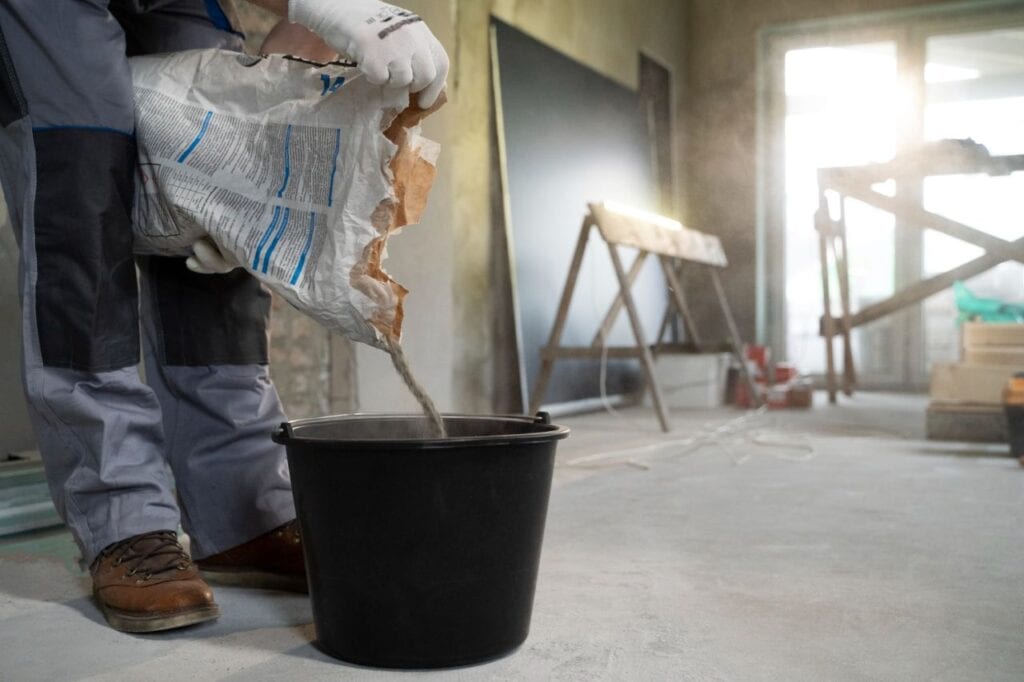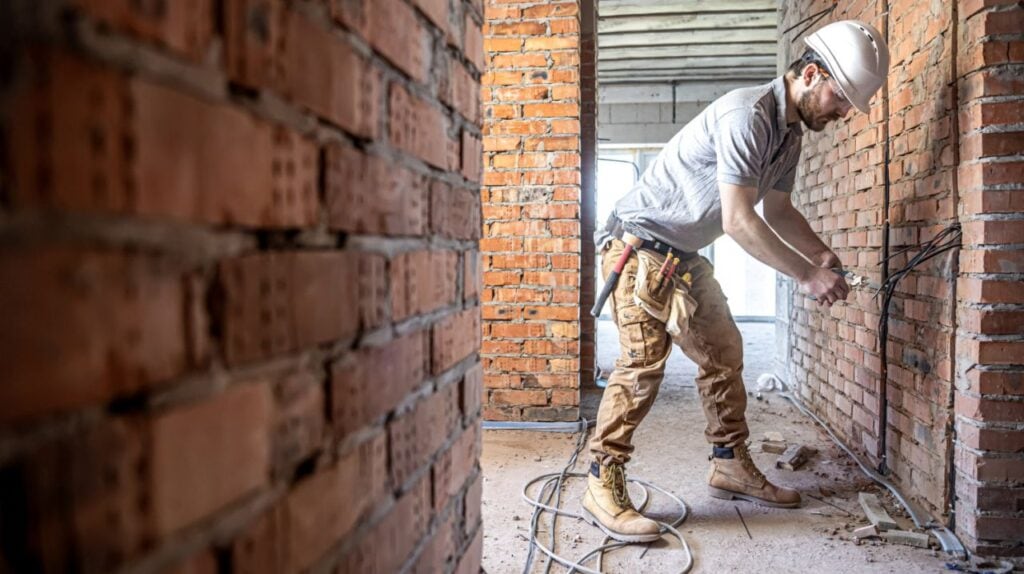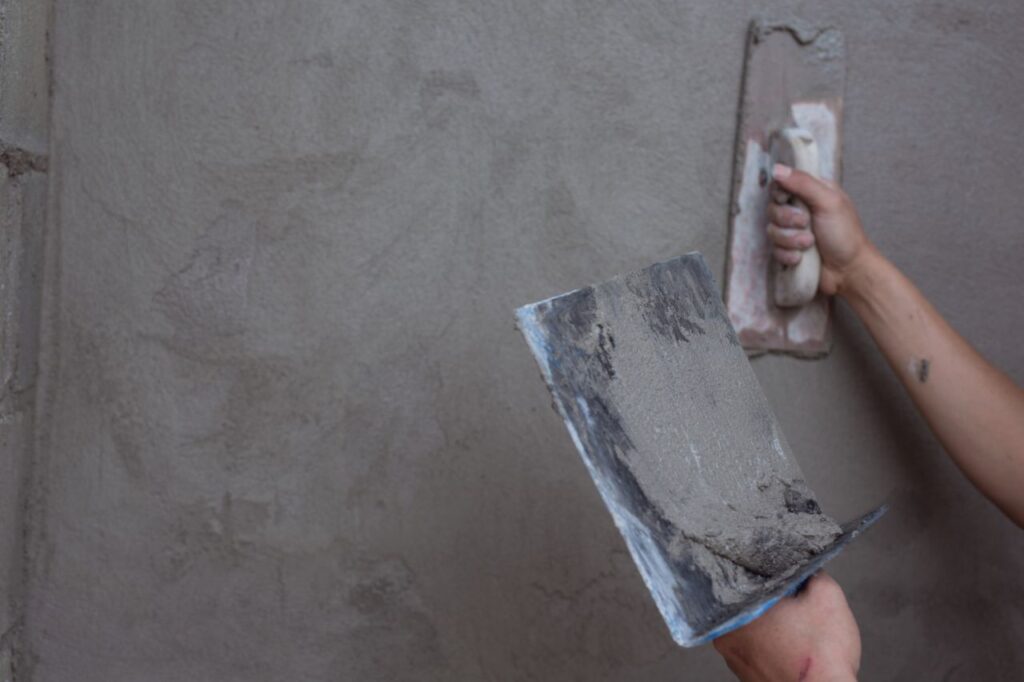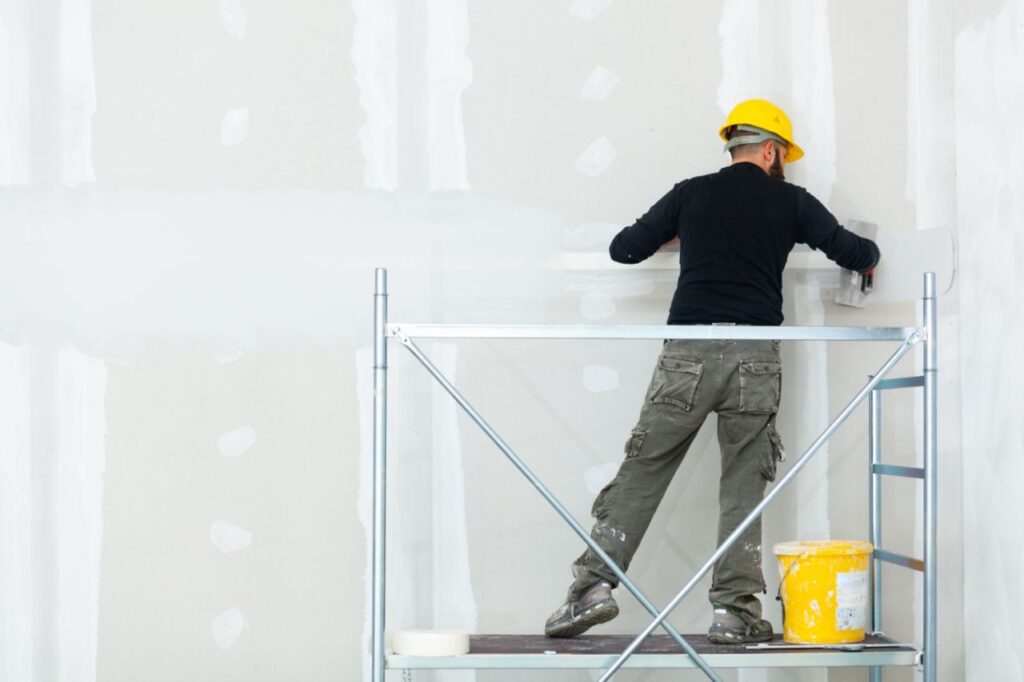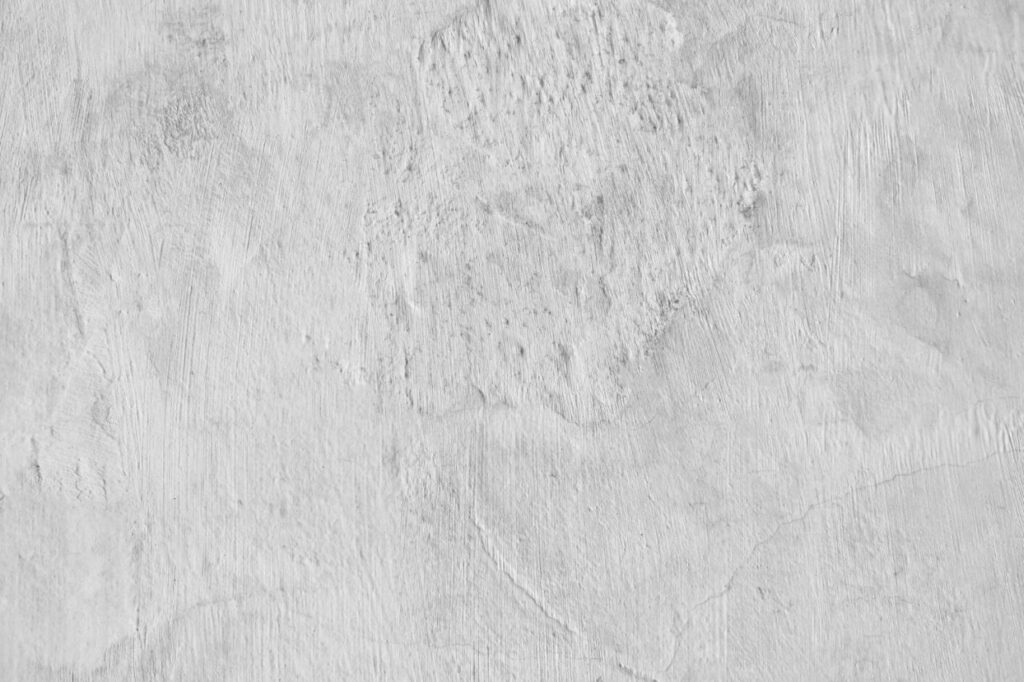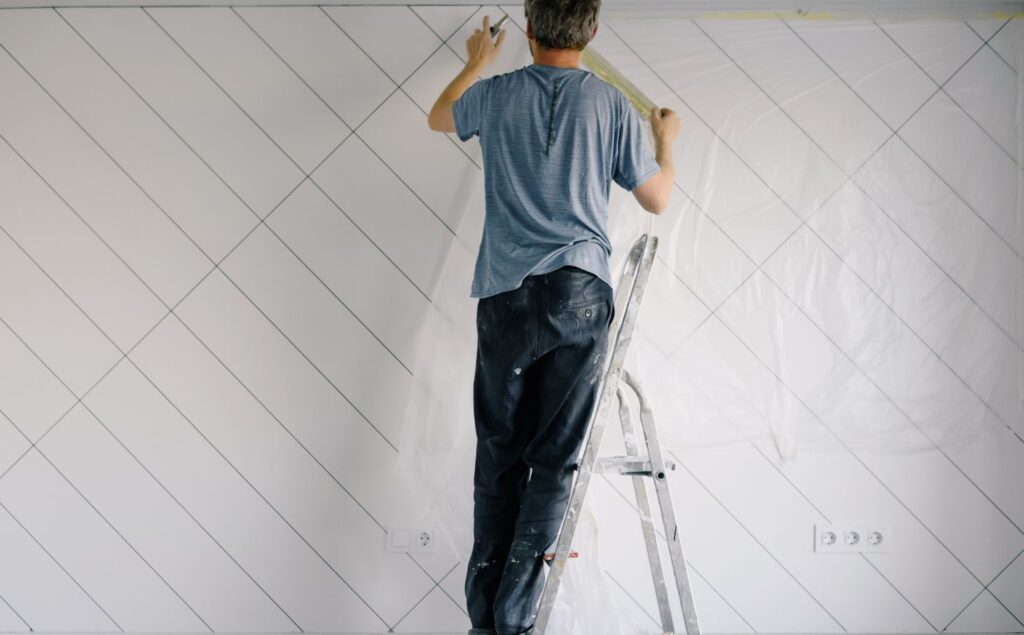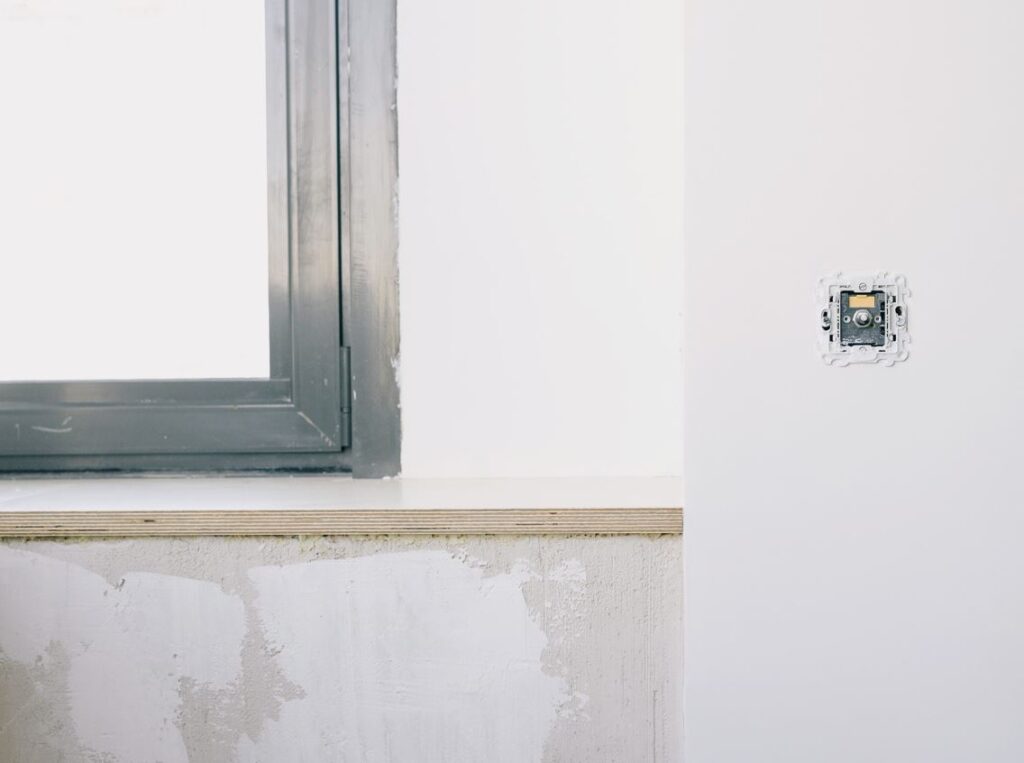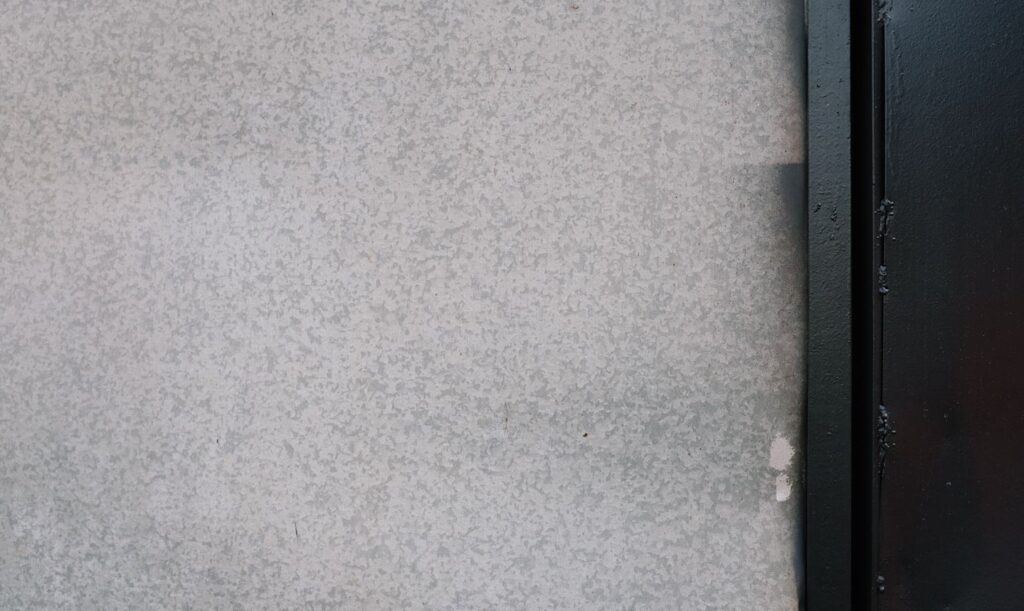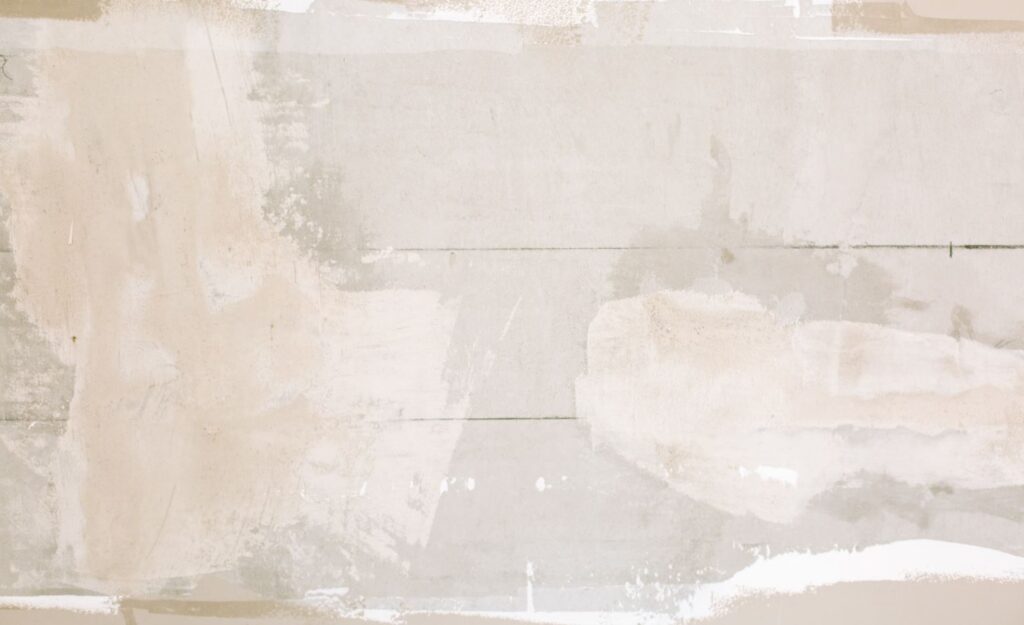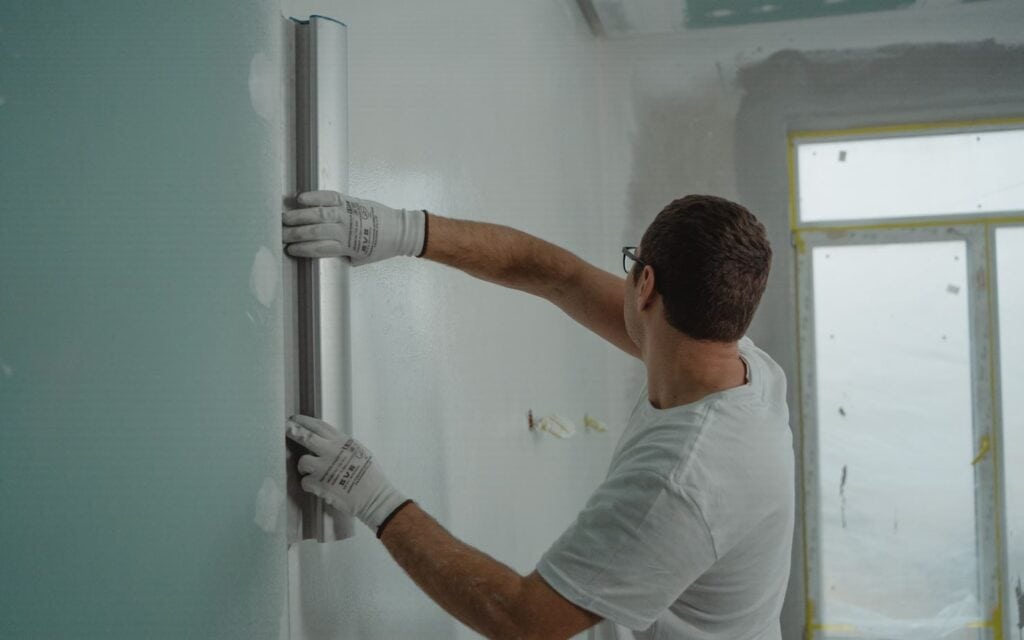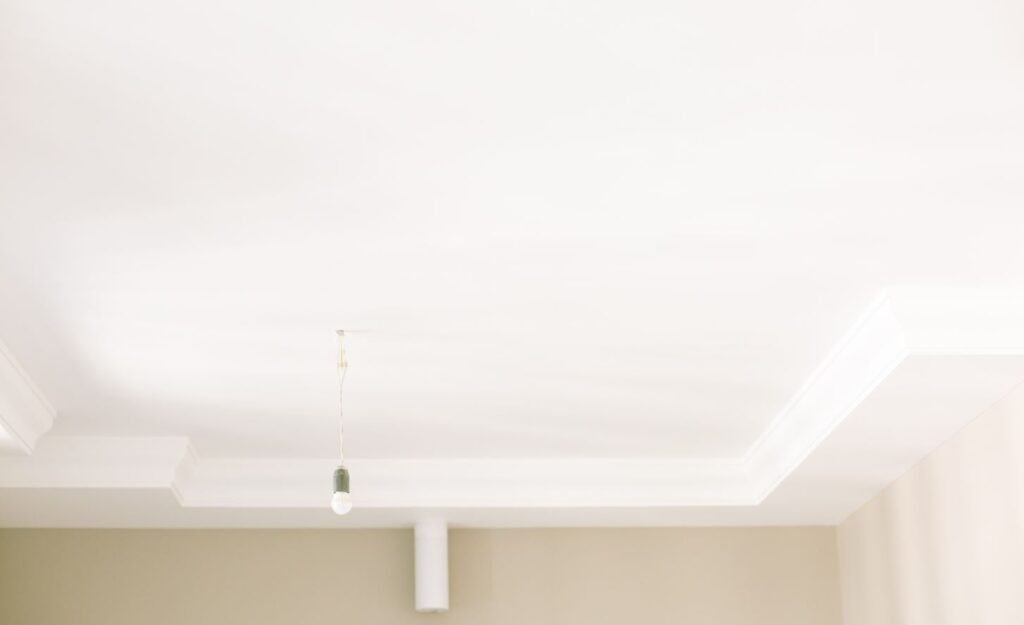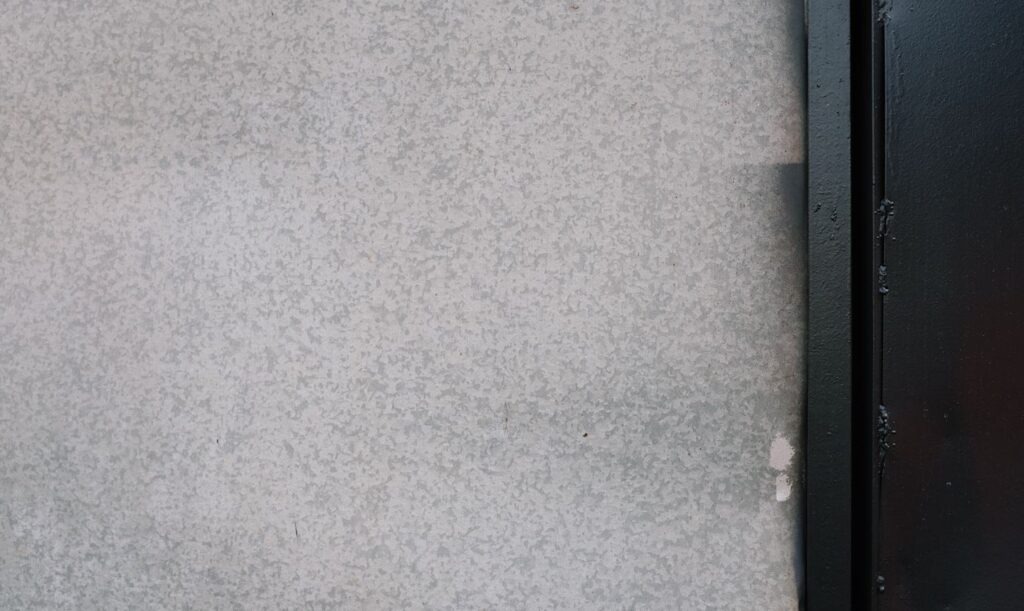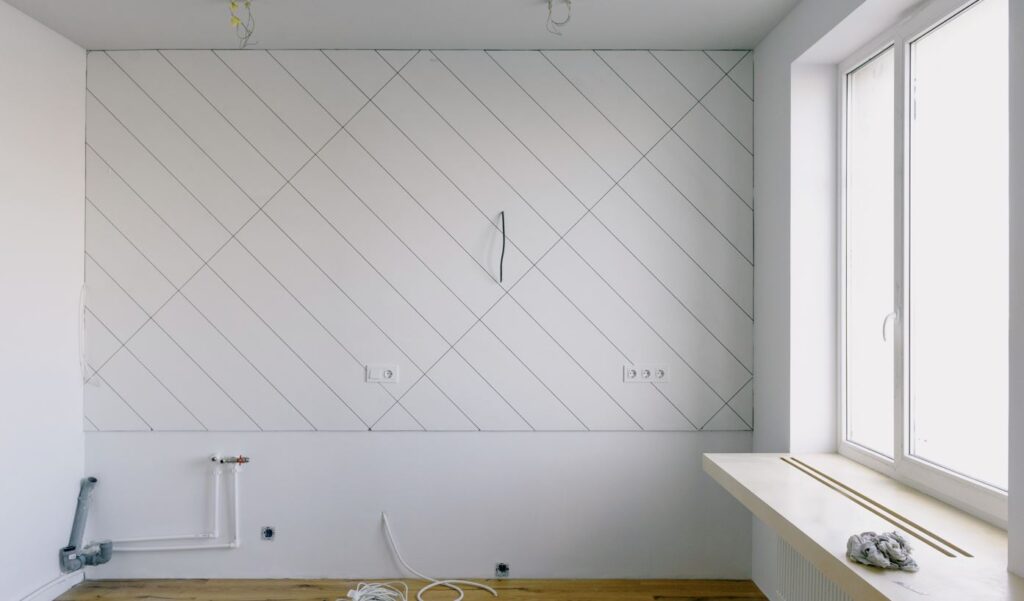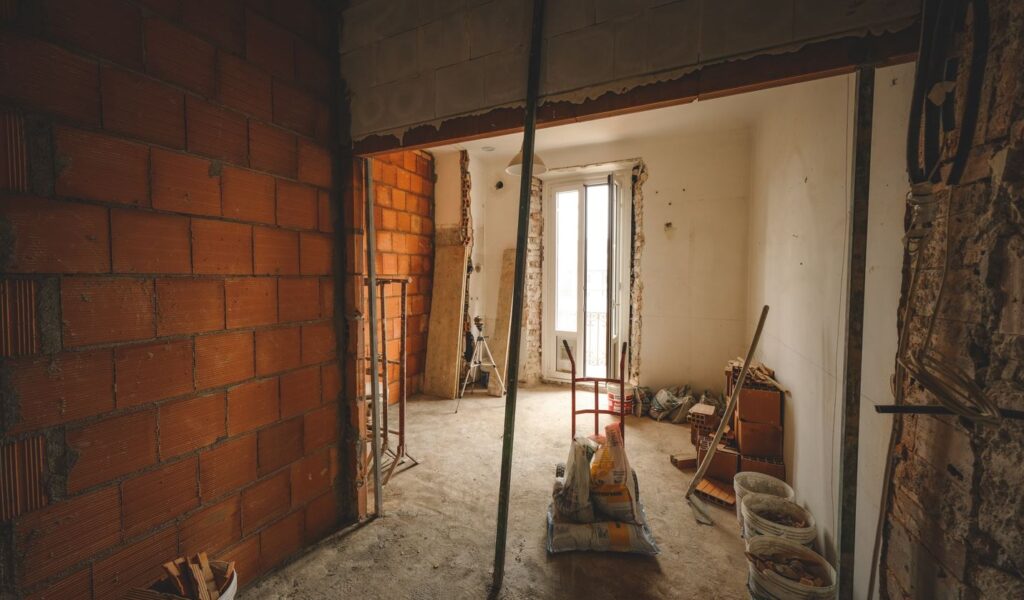Plaster is used regularly, yet few people understand how to properly dispose of it. Plaster as well as its components are difficult to remove from a building.
Recycling used materials is a viable option for trash removal because of the positive impact it has on the environment.
Plaster that has been ordered in excess should be returned to the company from which it was purchased or recycled.
Most municipal landfills and recycling sites should accept plasterboard without any hassle.
See advance which nearby businesses offer this service. Recycle materials if at all possible.
Many methods for properly discarding Plaster are covered here.
Is Plaster Harmful?
Plaster dust is a serious health hazard, especially when working with wet-to-dry mixtures and while sanding down dried materials.
Plastering components, such as limestone, calcium sulphate hemihydrate, traces of silica, clays, and mica, and hydrated lime, are composites, which explains why this is the case.
Inhaling the dust produced by these materials is dangerous, both immediately and in the long run.
Asbestos exposure can occur through direct contact with ACMs or through their inadvertent disturbance.
Plaster sanding dust is a major contributor to the development of COPD and occupational asthma, two potentially lethal lung disorders.
Can we reuse Plaster of Paris?
Drying Plaster of Paris to a powder allows for its recycling. When the Plaster is mixed with water again, it can be used to cast fresh moulds of almost any design.
Plaster Dehydration
Plaster should be baked at 180 degrees Celsius. The plaster will heat up to a point where any moisture in it will evaporate. You can clean up the Plaster of Paris mess by taking it outside and covering it with an old cloth. Using a face mask and protective eyewear will keep dust from entering your lungs and eyes.
Arrange a metal or plastic tray on a flat surface (a workbench, for example) to hold the mould. You can break up the mould into pieces by smashing it with a hammer. While doing this, make sure to use safety equipment like goggles. Location in the oven should be on a disposable roasting pan. Towels can be washed in the machine to remove dust.
Put the baking dish in the preheated oven. The plaster pieces will need to dry overnight. If you are concerned about having the oven on any and all night, you could begin the process in the morning and finish it before bedtime by removing the Lid. Over time, the high oven temperature will cause the liquid in the plaster to evaporate.
The following morning, take out one plaster slab from the oven.
Crushing it with a hammer will reveal any remaining liquid. The plaster's drying time may extend into the overnight hours. It can be reduced to a powder if it is dry enough to do so. Take out the leftover plaster and let it cool completely in the oven.
Use a grinder to reduce the pieces to the consistency of powder. Plaster of Paris can be recycled and reused for other purposes. Changing its form simply requires adding more water and stirring.
Is Plaster Recyclable?
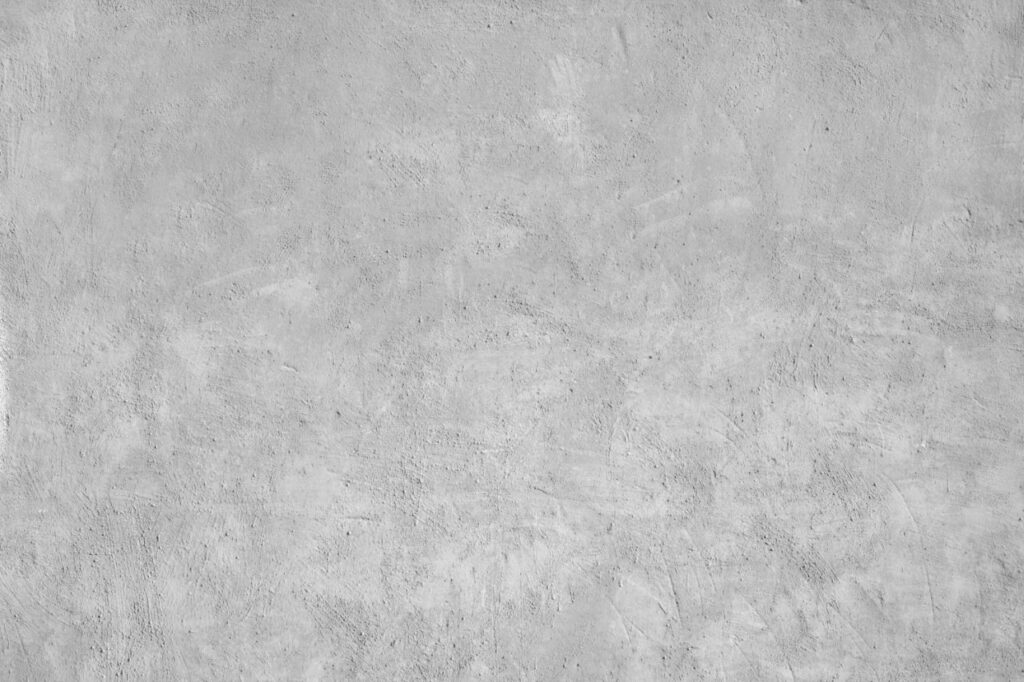
Plaster of Paris' biodegradability has not been adequately investigated. Some have stated that the outcomes are not consistent and depend on factors such as the Plaster of Paris's raw materials and manufacturing technique. It's not uncommon for Plaster of Paris to be made with recycled materials like glass, plastic, or paper.
Biodegradation can be sped up by combining these substances. Plaster of Paris may be partially biodegradable due to the presence of plastic and glass components, but the paper components are not. When compared to nonbiodegradable plastics and glasses, paper's capacity to produce biodegradable composites with the other materials is a major advantage.
What Is the Best Way to Dispose Plaster?
Burying Plaster
Plaster can be buried as a means of disposal. Simply dig a hole, fill it with the trash, and cover it up. The plaster might then be protected from the elements by draping earth over it.
Breaking It Down and Putting It Away
Plaster can also be disposed of by breaking it up, bagging it, and throwing it away. Plaster can be disposed of in this manner by first being broken up into tiny pieces, then being placed in a plastic bag, and finally being disposed of in your trash bin. Put the trash can lid on top of the fragments.
Adding Water and Waiting for It to Decompose
Plaster can be disposed of by mixing it with water and letting it degrade. Plaster will deteriorate in the presence of water, releasing carbon dioxide and other gases in the process of decay. Plaster will bubble and foam as a result of these gases, so make sure you work in a well-ventilated environment. In a few days, the plaster will have completely broken down, and the dust will be harmless enough to sweep up.
Burning It
Plaster can be burned for efficient disposal. Plaster, along with anything else it might have been combined with, would be incinerated if set on fire. Any potentially dangerous substances in the plaster will be destroyed during the cremation process, making this a safe option for disposal.
Employ a Professional
Plaster can be disposed of in a number of ways, but most people opt to have a professional handle the job. They know how to properly remove and dispose of plaster without harming the surrounding area or ecosystem.
Plaster Removal Suggestions
How to properly dispose of old plaster is a typical concern among first-time and experienced remodelers alike. In this article, we will go through several suggestions for the correct disposal of plaster:
- Empty the space where the plaster will be discarded of all its contents. After the plaster has been broken down, the amount of dust will be reduced by doing this.
- Before chipping away at the plaster with a chisel, hammer, or jackhammer, cover the area with a layer of fine sand or dirt. As a result, less environmental harm will occur.
- All shards of plaster should be picked up and properly disposed of. In the event that the plaster cannot be removed, as much debris as possible should be swept up with a broom or similar bristled implement.
- Once the plaster has already been broken down, you can sweep or vacuum off the leftover dust.
Why Must Plaster be Properly Disposed of?
Even though it's widely used in construction, plaster can have harmful effects on the environment if it's thrown away improperly. In order to prevent contamination and potential risks, it is vital to properly dispose of plaster, which might contain components that are dangerous to the environment and human health.
Plaster must be disposed of correctly since it contains components that might be damaging to the environment if they are released. Asbestos, a carcinogenic substance that can cause major health problems if inhaled, may be present in some types of plaster. Asbestos fibres can be released into the air from improperly discarded plaster, endangering the health of anybody in the vicinity.
Plaster also has the potential to pollute the environment and take up valuable landfill space. Plaster has the potential to emit toxic gases and leachate when dumped in a landfill, which could contaminate nearby soil and water supplies.
Plaster waste management is an additional way to lessen the negative effects of mining and manufacturing on the environment. Plaster is a byproduct of the construction industry that can be recycled or repurposed to save raw materials.
Disposing of plaster in an eco- and health-friendly manner is crucial. To avoid pollution and other hazards, plaster disposal must adhere to local legislation and norms. Plaster waste management is an important step towards a more sustainable and healthy future.
Risks Discovered In Plaster
Plaster has a more sophisticated look and is more fireproof and soundproof than drywall, but it also has some downsides. Cracks and peeling are common in plaster. You can't pound a nail into that wall for anything.
Coal smoke, asbestos, and even traces of lead have all been found in plaster walls. Demolition of plaster walls requires extreme caution because inhaling the material's dust can cause severe illness.
Asbestos fibres are irritating to the lungs, and prolonged or excessive exposure can cause scarring of the lungs. Asbestos exposure over time has been linked to the development of respiratory illnesses and cancer.
Generally speaking, if a house was constructed anytime between the 1940s and the 1970s, it is highly likely to include asbestos fibres in the insulation or plaster used to strengthen the structure.
The surface paint may potentially be toxic due to the presence of lead. Yet, breaking the rules is part of life. Never presume that your plaster is safe to use. If you spend money on testing, you won't have to worry about creating harmful dust during demolition, which might save you a lot of money in disposal fees.
You can't see asbestos if you look for it. Asbestos tests can be found at home improvement stores for as little as $10. The EPA warns that households should not attempt to collect asbestos samples themselves due to the high probability of error in doing so.
Remember that there is room for error in the information gathering phase of the test. Just a word of caution. There are certain historians who would immediately reject the concept of removing the plaster.
Plaster walls are easily restored and, according to historians, contribute to an older home's unique character and feel.
They may lecture you on the merits of the building techniques of the day if you dare remove the plaster. Yet if people's lives are in jeopardy, functionality must take precedence over form. If you've decided to tear down some walls or the ceiling, do it properly.
Recycling Is Never a Bad Idea
Plaster must be disposed of properly to prevent damage to the environment and human health. Plaster is widely used in construction, but it can contain asbestos and other hazardous elements that threaten human and environmental health if not handled appropriately. Plaster is a material that should be disposed of correctly to avoid contamination and other risks, as well as to conserve landfill space.
One of the best methods to lessen plaster's negative effects on the environment and make better use of the material is to recycle and repurpose it. Plaster recycling helps cut down on the need for new construction supplies while simultaneously giving rise to innovative goods and enterprises that are good for the economy and the labour market. Plaster repurposing is an innovative and eco-friendly approach to waste minimisation and material renewal. Plaster fragments, for instance, might be reused as garden edging or wall patchwork before being painted.
If plaster cannot be reused or recycled, it must be disposed of in a landfill or hazardous waste facility in accordance with regional guidelines. Plaster must be appropriately bagged and labelled so that waste disposal facilities can easily identify it and prevent it from contaminating other waste streams.
Plaster has a number of risks, so it's crucial to know how to handle it and where to put it when you're done. Plaster that has been found to contain asbestos, for example, must be disposed of in accordance with state and federal laws concerning such waste.
Everyone—homeowners, businesses, and governments alike—must do their part to ensure proper plaster disposal. Proper disposal of plaster and other waste materials is essential to preserving environmental quality and public health. Plaster can have a negative effect on the environment, but if we follow local legislation and norms, we can lessen that impact and work towards a more sustainable future.
Plaster has a number of detrimental effects on the environment and human health that must be avoided at all costs. There are a number of options for the responsible management of plaster waste, including recycling, reusing, and correct disposal. Proper disposal of plaster can contribute to a more sustainable and healthy planet for future generations.
Conclusion
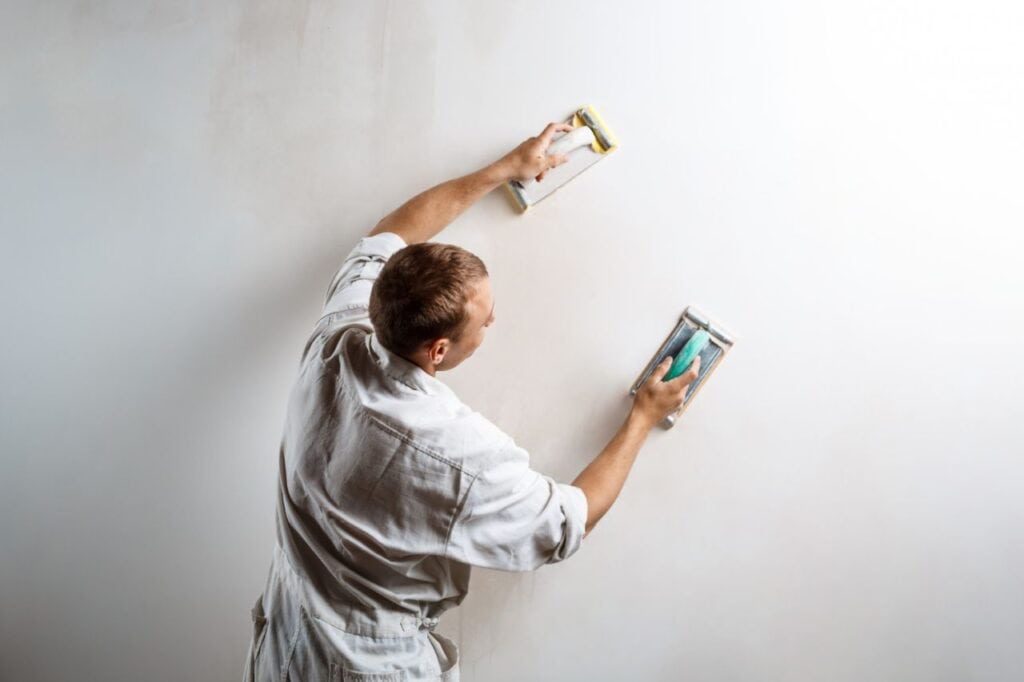
Even though plaster is used frequently, few people are aware of the correct way to dispose of it. The environmental benefits of recycling make it a practical option for garbage collection. When working with wet-to-dry mixtures or sanding down dried materials, plaster dust poses a significant health risk.
Drying plaster into a powder, then baking it at 180 degrees Celsius while wearing protective gear like goggles and protective eyewear allows it to be reused. Plaster can also be smashed with a hammer to create smaller pieces.
To clean dust from towels, just throw them in the washing machine. Drying Plaster of Paris in a preheated oven takes only one night. To recover any hidden fluid, remove one slab the following morning and crush it with a hammer.
If the plaster is dry enough, you can grind it into powder. Although its biodegradability has been researched, it can be recycled and reused.
Recycled materials such as glass, plastic, or paper are commonly used in the production of Plaster of Paris.
When compared to paper, which can be used to create biodegradable composites with the other materials, Plaster of Paris is only partially biodegradable due to the presence of plastic and glass components.
Plaster should be buried, broken up, bagged, and discarded in the trash. In addition to burning, composting, and hiring a professional, there are a few other options for getting rid of plaster. Some methods for removing plaster involve clearing out the area where it will be dumped, covering the spot with a thin layer of fine sand or dirt, and then picking up and disposing of any fragments left behind. Plaster should be disposed of properly to avoid contamination and other hazards.
Content Summary
- Plaster is used regularly, yet few people understand how to properly dispose of it.
- Plaster as well as its components are difficult to remove from a building.
- Recycling used materials is a viable option for trash removal because of the positive impact it has on the environment.
- Plaster that has been ordered in excess should be returned to the company from which it was purchased or recycled.
- Recycle materials if at all possible.
- Is Plaster Harmful?
- Plaster dust is a serious health hazard, especially when working with wet-to-dry mixtures and while sanding down dried materials.
- Plaster sanding dust is a major contributor to the development of COPD and occupational asthma, two potentially lethal lung disorders.
- Drying Plaster of Paris to a powder allows for its recycling.
- When the Plaster is mixed with water again, it can be used to cast fresh moulds of almost any design.
- Plaster should be baked at 180 degrees Celsius.
- You can clean up the Plaster of Paris mess by taking it outside and covering it with an old cloth.
- Using a face mask and protective eyewear will keep dust from entering your lungs and eyes.
- You can break up the mould into pieces by smashing it with a hammer.
- Put the baking dish in the preheated oven.
- The Plaster pieces will need to dry overnight.
- The following morning, take out one plaster slab from the oven.
- The Plaster's drying time may extend into the overnight hours.
- Take out the leftover plaster and let it cool completely in the oven.
- Use a grinder to reduce the pieces to the consistency of powder.
- Plaster of Paris can be recycled and reused for other purposes.
- The plaster of Paris' biodegradability has not been adequately investigated.
- It's not uncommon for Plaster of Paris to be made with recycled materials like glass, plastic, or paper.
- Plaster of Paris may be partially biodegradable due to the presence of plastic and glass components, but the paper components are not.
- When compared to nonbiodegradable plastics and glasses, paper's capacity to produce biodegradable composites with the other materials is a major advantage.
- Plaster can be buried as a means of disposal.
- Plaster can also be disposed of by breaking it up, bagging it, and throwing it away.
- Put the trash can lid on top of the fragments.
- Adding Water and Waiting for It to Decompose Plaster can be disposed of by mixing it with water and letting it degrade.
- Plaster can be burned for efficient disposal.
- Any potentially dangerous substances in the plaster will be destroyed during the cremation process, making this a safe option for disposal.
- Plaster can be disposed of in a number of ways, but most people opt to have a professional handle the job.
- They know how to properly remove and dispose of plaster without harming the surrounding area or ecosystem.
- How to properly dispose of old plaster is a typical concern among first-time and experienced remodelers alike.
Frequently Asked Questions About Plastering
Exterior walls are best plastered with cement plaster due to its resistance to moisture, which helps to shield the wall from the effects of climate change and pollution. In addition, cement plaster's durability makes it a great option for both exterior and interior applications.
In order to achieve a professional-looking sheen, you'll need to apply at least two coats. After the second coat has dried, check for obvious grooves and indents; if there are any, trowel on a third.
Plastering work often has issues like blistering, cracking, efflorescence, flaking, peeling, popping, softness, and uneven surfaces. As soon as these plastering flaws are spotted, they must be fixed.
Preventative measures include selecting appropriate materials and following standard construction procedures, as well as proper preparation and cleaning of the wall surface. Plasterwork is less likely to delaminate when the wall surface is clean and properly prepared for the application of the plaster.

